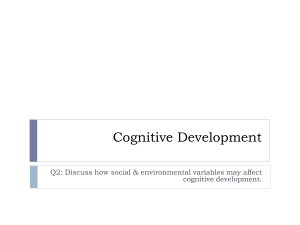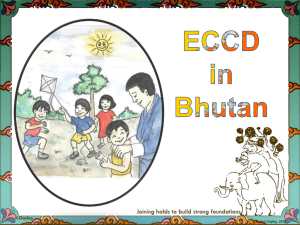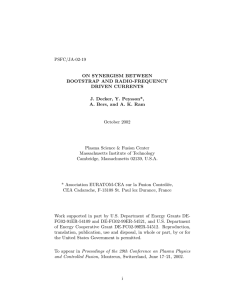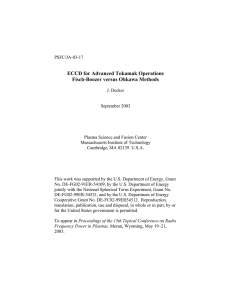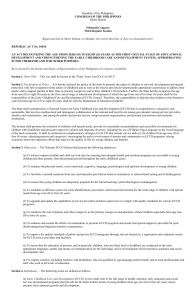Expanding Access to ECCD
advertisement
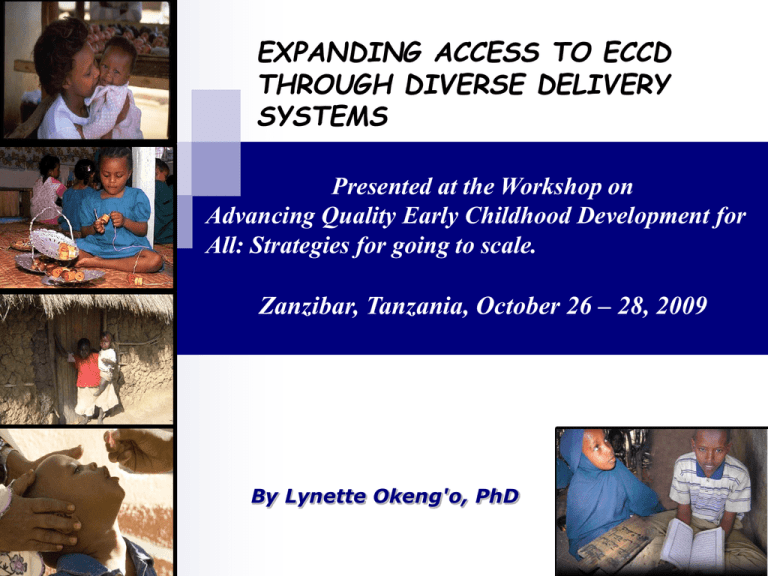
EXPANDING ACCESS TO ECCD THROUGH DIVERSE DELIVERY SYSTEMS Presented at the Workshop on Advancing Quality Early Childhood Development for All: Strategies for going to scale. Zanzibar, Tanzania, October 26 – 28, 2009 By Lynette Okeng'o, PhD Presentation Outline Introduction Delivery systems for improving access Challenges and opportunities Suggestions for strengthening programs Expanding access Increasing opportunities/avenues through which children experience and benefit from services Increased access to services that are: Good quality with positive impact Well institutionalized Sustainable Well executed expansion strategies lead to provision of high quality, holistic, inclusive and comprehensive ECCD services Current Situation 35 30 25 20 15 10 5 0 a bi m Za a l i an nz Ta ia er er ea a eg en S ig N ig N n ui i al M a ri be Li G Data source: Global Education Digest, 2008 for all except Mali and Zambia (country reports) Who are the excluded? Children aged 0-3 years Children living in poverty Orphans and vulnerable children Children living in rural areas Children from nomadic communities Children with special needs Expanding access requires extra effort in reaching these children Delivery systems Centre - based programs Community based programs Parent empowerment programs Health and/or nutrition programs Home based programs Categories not mutually exclusive Centre based programs Provide a good opportunity to group large numbers of children and usually benefit from some kind of organization. Opportunities Provides an opportunity for formalized, regulated and standardized service delivery Multiple service providers private entrepreneurs, NGO’s, FBO’s and to a limited extent by government through Ministry of Education Usually located in or near primary schools Challenges: Predominantly early education programs Teaching methods often developmentally inappropriate Mostly located in urban areas catering for children in the middle to high income groups Expanding centre based services Adding a reception year into formal primary school system (South Africa, Zanzibar, Kenya) Strengthen parent education and involvement Promotion of ECCD programs for rapid school readiness among hard to reach communities (KSRI) Strengthening services to include nutrition, health, sanitation and protection for holistic service delivery Establishing ECCD centers in other institutions including hospitals, work places and Churches/Mosques Strengthen partnership with private entrepreneurs, NGO’s, FBO’s, CBO’s etc that serve vulnerable communities Community based programs Initiated by communities to address community felt needs (CBCC’s- Malawi, NCP- Swaziland, MRC-East Africa, ECD centers in Kenya etc) Opportunities Possibility of reaching a large number of vulnerable children Availability of diverse community resources Positive social- cultural practices Growing interest among various partners to work with communities Existent health and nutrition services Challenges Limited funding and government involvement Limited capacity in management of centers Caregivers and educators mostly volunteers with limited training Weak links with national structures Home - based programs Usually initiated to support working mothers in low income urban areas who need child care services (e.g Korogocho home based day care centers- Kenya) Opportunities Possibility of reaching children aged 0-3 years Serve the needs of very vulnerable communities Challenges Often not registered and uncoordinated Caregivers not trained Limited coverage Strengthening community and homebased programs Enhance community level management, commitment and control Strengthen evidence based pilot programs to encourage replication in other communities Establish sustainability structures through: Strengthening linkage with national plans and programs eg PRSP, FTI, SWAps, Vision 2020 etc Diversified funding Decentralized capacity building programs Linkage with local government structures that connect to other levels of government Continuous effort to ensure that programs respond to community felt needs Establishment of Effective M&E systems Include early stimulation into existing health, sanitation, nutrition and protection programs to reach the under 3’s Strengthen the development component of the ACSD strategy Include early stimulation in the c-IMCI family package Include care for development counseling sessions in community health programs Include early stimulation indicators and information on health records Parent empowerment programs Parent empowerment programs seek to educate and support parents and caregivers in providing environments that maximize children’s potential — physically, socially, emotionally, intellectually, and spiritually Current situation: Limited coverage Centre on health aspects of development Receive low priority in programming 00-011 Why Focus on Parental Capacity? Sensitive Periods for Early Development critical period All children have a right to parental love and care (CRC Article 7, 9, 10) critical period wanes Binocular vision Central Auditory System Emotional control Habitual ways of responding Peer social skills Parents critical to early development Language symbols Cognitive skills: relative quantity age 0 1 2 3 4 5 6 7 (yrs) Strategies for expansion Parental education programs Integration of parental education into existing programs (post natal care, adult literacy etc) Development of parental education manuals for all age groups and literacy levels Parental education through media (newsletters, TV, radio etc) Parental support programs Parent support in the Home: Home visiting Materials development programs Strengthening linkage with relevant ministry for establishment of IGA’s Parental Involvement programs Provide policy support for the establishment of PTA’s and open days in ECCD centers Encourage family days in the communities Expansion of ECCD programs calls for increased comprehensiveness across the life cycle.. 5-8yrs • School readiness 3-5 yrs •Socialization, psychosocial interaction Prenatal-3 years Survival, care, and protection of newborn. Nutrition security, immunization and cognitive stimulation. •Play •Transition and adjustment to formal school • Learning of three R’s •Maintaining good health, nutrition • Maintaining good health, nutrition •School readiness • Life skills •Gender socialization • Gender socialization In summary Expansion of access requires Intense advocacy and effective communication strategies Government financial and political commitment Implementation of diverse programs based on community felt needs Effective multi-sectoral co-ordination Strengthened partnership among various stakeholders Empowered communities for enhanced sustainability Strengthened accountability as well as monitoring and evaluation systems Thank you…




